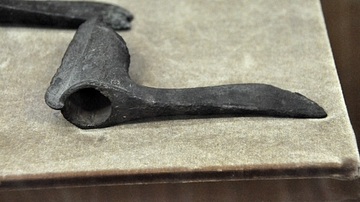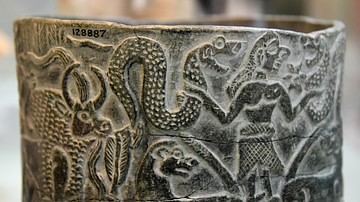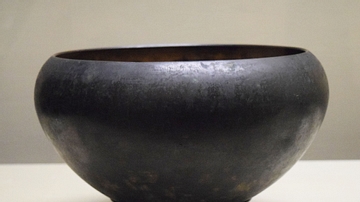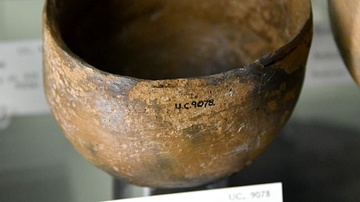Illustration
Vessels of soft stone, including chlorite or steatite, came from Iran and they demonstrate the extensive trade network of the cities of Southern Mesopotamia during this period. This green chlorite vessel is straight-sided and has an imbricated design carved on the exterior. It was found in grave PG407 at the Royal Cemetry of Ur, Southern Mesopotamia, modern-day Iraq. Early Dynastic Period, 2600-2400 BCE. Part of objects allotted to the British Museum from Ur excavation season 1927-1928. (The British Museum, London).
About the Author
Cite This Work
APA Style
Amin, O. S. M. (2018, February 21). Chlorite Bowl from Ur. World History Encyclopedia. Retrieved from https://www.worldhistory.org/image/8133/chlorite-bowl-from-ur/
Chicago Style
Amin, Osama Shukir Muhammed. "Chlorite Bowl from Ur." World History Encyclopedia. Last modified February 21, 2018. https://www.worldhistory.org/image/8133/chlorite-bowl-from-ur/.
MLA Style
Amin, Osama Shukir Muhammed. "Chlorite Bowl from Ur." World History Encyclopedia. World History Encyclopedia, 21 Feb 2018, https://www.worldhistory.org/image/8133/chlorite-bowl-from-ur/. Web. 01 Jul 2025.








